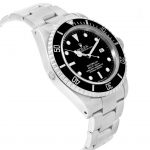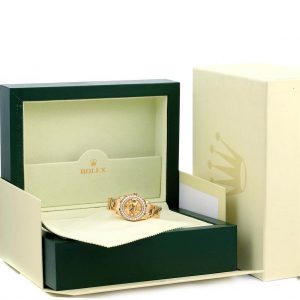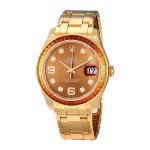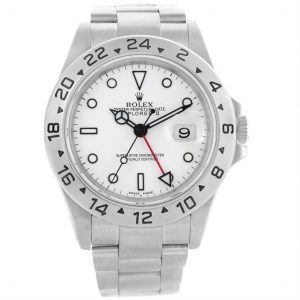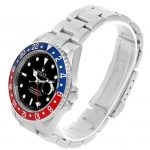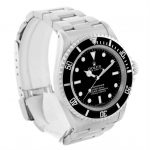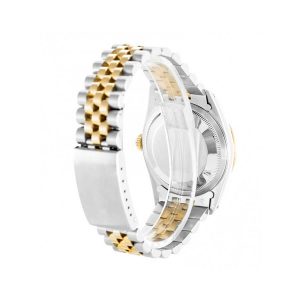These two elements, each with a rich history, come together on Rolex’s latest creation: the yellow gold Daytona with a green dial. While the fusion of yellow gold, a material revered since ancient times, and green, Rolex’s signature color, might evoke images of opulence, it’s the way these elements are brought together on the Daytona that elevates this watch to a new level of sophistication. 
When it introduces something as bold and refined as this yellow gold Daytona, it’s impossible not to take notice. And while the replica watch may bring to mind its predecessor – the Daytona often linked to John Mayer – it would be a mistake to reduce this new model to a mere sequel. It’s a statement in its own right, and it deserves to be appreciated on its own terms.
A Brief Look at Rolex and Nicknames
In the world of luxury watches, nicknames have a peculiar way of becoming part of the lexicon. Some, like “Pepsi” for the GMT-Master II and “Coke” for its sibling, are widely accepted. Others, such as “Batgirl” or the infamous “John Mayer,” are a bit more contentious. While it’s tempting to draw comparisons, we can do better than simply tagging the latest iteration of the yellow gold Rolex Daytona as “John Mayer II.” Let’s leave that behind and allow this reference, the 126508-0008, to speak for itself.
Rolex has a habit of taking familiar designs and elevating them with subtle refinements. The 126508-0008, with its combination of yellow gold and green, is the perfect example of this. While the 116508-0013 introduced the green-dialed Daytona in yellow gold, the new model is leaner, more refined, and has a character all its own.
The Charm of the 2025 Daytona Collection
The 2025 Daytona lineup is undeniably strong, showcasing Rolex’s ability to combine timeless design with modern innovation. The yellow gold Daytona with the green dial, priced at €48,800, is a prime example of this. Building upon the foundation set by its predecessor, the 116508-0013, the new 126508-0008 is slimmer and features an updated dial. The most noticeable changes are the dial’s new shade of green and the gold sub-dials, which replace the green sub-dials found on the older model. 
These updates, though subtle, make a significant difference. The new Daytona’s green dial is a more muted, refined shade. The sunburst finish that once created a striking, almost glaring effect has been softened. The use of gold for the sub-dials and applied markers further complements the watch’s yellow gold case and bracelet, bringing the entire design into perfect harmony.
The Significance of the Sub-Dials
The sub-dials of the replica Rolex Daytona have always played a key role in defining its aesthetic, and the 126508-0008 is no exception. The decision to replace the green sub-dials of the earlier model with gold sub-dials is a brilliant move. It’s not just about aesthetics; it’s about creating balance. The gold sub-dials mirror the color of the case, bezel, and bracelet, unifying the design in a way that feels both organic and sophisticated.
This change in color and design direction might seem minor, but it adds an element of warmth to the watch, making it feel more luxurious without overshadowing the green dial itself. The combination of these two colors – green and gold – creates an almost effortless harmony, and it’s hard not to appreciate how well these elements work together. 
A Nod to Customization
When I first encountered the new green-and-gold Daytona, a thought crossed my mind. It reminded me of the Artisans de Genève Honey Green Rolex Daytona modification, which featured a deep green Bakelite bezel, gold sub-dials, and a brushed yellow gold case and bracelet. While Rolex doesn’t go as far as using a brushed finish for the case and bracelet, the overall color scheme of the 126508-0008 shares similarities with this custom creation. The gold sub-dials and green dial, paired with a matching yellow gold bracelet, create an effect that’s both luxurious and undeniably eye-catching.
It’s a subtle nod to the world of customization, but it’s clear that Rolex’s execution is all about refinement and elegance. It’s a Daytona that can stand proudly on its own, without the need for extravagant modifications.
The yellow gold Daytona with the green dial has quickly become a favorite among collectors, and for good reason. It embodies the essence of Rolex: refinement, elegance, and an unyielding commitment to quality. While I personally find myself drawn to the yellow gold Daytona with the turquoise dial (reference 126518LN), there’s no denying that the 126508-0008 is a true standout in the 2025 Daytona collection.
What do you think of the new yellow gold Daytona with a green dial? Does it surpass its predecessor, or is it simply a continuation of an already successful formula? Let me know your thoughts in the comments.
